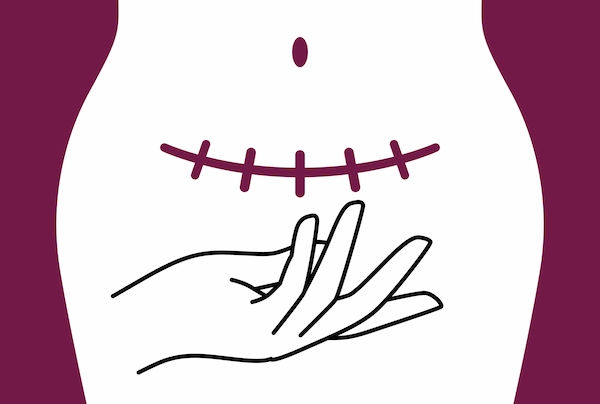Parenthood Journey: A Guide to Pregnancy and Childbirth
Navigate pregnancy and childbirth with confidence using this compassionate guide to a healthy and informed journey to parenthood.


Introduction
The positive sign on a pregnancy test marks the beginning of an incredible, transformative journey. Navigating pregnancy and childbirth is a unique experience filled with joy, anticipation, and, understandably, a fair share of questions. Whether you're a first-time parent or adding to your family, the path from conception to holding your newborn can feel complex. This guide is designed to be your trusted companion, breaking down each stage into manageable, empowering information. We'll walk through the trimesters, demystify the process of labour, and prepare you for the postpartum period. Our goal is not just to inform but to instill confidence, emphasising that while every pregnancy is different, you have the strength and resources to navigate this path. From understanding foetal development to creating a supportive birth environment, consider this your holistic roadmap for the months ahead.
The First Trimester: Foundations and Self-Care (Weeks 1-12)
The first trimester is a period of rapid development for your baby and significant adjustment for you. While the external signs may not be obvious yet, immense changes are happening within.
Key Developmental Milestones
During these initial weeks, your baby progresses from a cluster of cells to a tiny, recognisable human. By the end of the first trimester, all major organs have begun to form, the heart is beating, and tiny arm and leg buds are visible. This critical period underscores the importance of early prenatal care.
Navigating Early Pregnancy Symptoms
Many women experience symptoms like fatigue, nausea (often called "morning sickness," though it can strike at any time), and breast tenderness. To cope with morning sickness naturally, try eating small, frequent meals, staying hydrated, and snacking on ginger biscuits or crackers. Remember, these symptoms, while challenging, are often a sign that pregnancy hormones are surging as they should. If your nausea is severe and prevents you from keeping any food or liquids down, it's important to consult a doctor online with Apollo24|7 to rule out hyperemesis gravidarum.
Your First Prenatal Visits: What to Expect
Your first prenatal appointment is typically the most comprehensive. Your doctor will confirm the pregnancy, estimate your due date, perform a physical exam, and order blood tests. Apollo24|7 offers convenient home collection for tests like blood group, haemoglobin, and vitamin levels, making this process smoother. This is the perfect time to ask questions and establish a relationship with your healthcare provider.
Get Your Health Assessed
The Second Trimester: The "Honeymoon Period" (Weeks 13-26)
For many, the second trimester brings a welcome respite. Energy levels often return, and nausea typically subsides, making this an ideal time to focus on preparation and enjoyment.
Feeling the Baby Move and Growing a Bump
One of the most magical milestones is feeling your baby's first flutters, known as "quickening," which usually happens between 18 to 22 weeks. As your bump becomes more prominent, investing in comfortable maternity wear and continuing with safe exercises for pregnant women like prenatal yoga or swimming can boost your well-being.
The Anatomy Scan and Genetic Testing
Around 20 weeks, you'll have a detailed ultrasound called the anatomy scan. This checks your baby's physical development, measuring organs, limbs, and verifying the placenta's position. This scan may also reveal the baby's sex, if you choose to know. Your doctor will also discuss optional genetic screening tests based on your age and history.
Planning Maternity Leave and Finances
Use this energetic period to get practical. Review your company's maternity leave policy and start the application process. It's also a wise time to create a baby budget, accounting for new expenses like diapers and childcare, and to begin planning your maternity leave strategically.
Consult an Obstetrician and Gynaecologist for the best advice
The Third Trimester: The Final Countdown (Weeks 27-40+)
The home stretch! Your baby is putting on weight, and you may feel more physically cumbersome. The focus now shifts to final preparations for birth and baby.
Preparing Your Body for Labour
Staying active can help your body get ready for labour. Practices like squatting and pelvic tilts can be beneficial. You might also experience Braxton Hicks contractions, irregular, practice contractions that are different from the real thing. Understanding the differences between Braxton Hicks and real contractions is key to knowing when labour truly begins.
Creating a Flexible Birth Plan
A birth plan is a wonderful tool to communicate your preferences for pain management, environment, and immediate newborn care. However, the most important word is flexible. Childbirth can be unpredictable. Discuss your hopes with your provider, but be open to changes that ensure the safety of you and your baby.
Signs of Labour: Knowing When It's Time
As you near your due date, watch for signs like the baby "dropping" (lightening), loss of the mucus plug, and your water breaking. True labour contractions become regular, longer, stronger, and closer together. If you suspect you're in labour or your water breaks, contact your healthcare provider immediately.
Understanding the Stages of Childbirth
Knowing what to expect during labour can significantly reduce anxiety. Childbirth is typically divided into three distinct stages.
Stage 1: Labour and Dilation
This is the longest stage, where your cervix effaces (thins) and dilates (opens) to 10 centimetres.
- Early Labour: Contractions are mild and irregular. Stay home, rest, hydrate, and distract yourself. This is when timing contractions becomes important.
- Active Labour and Transition: Contractions become intense, lasting about 60 seconds and coming every 3-5 minutes. This is when you should head to your birth place. Transition (7-10 cm) is the most challenging phase, but it signifies you're almost ready to push.
Stage 2: Pushing and Birth
This stage begins when you're fully dilated and ends with the birth of your baby. You'll actively push with each contraction. This can last from a few minutes to several hours.
Stage 3: Delivery of the Placenta
After your baby is born, mild contractions will continue until the placenta is delivered. This usually happens within 5-30 minutes.
Pain Management Options During Labour
Every person's pain tolerance is different. Explore all options so you can make an informed choice during labour.
Natural Techniques (Breathing, Movement, Hydrotherapy)
Many find relief through non-medical methods. Controlled breathing, changing positions (walking, rocking on a birth ball), and using a warm shower or tub can be incredibly effective for managing pain.
Medical Interventions (Epidurals, Nitrous Oxide)
An epidural is a common and very effective form of pain relief administered through a catheter in the lower back. Nitrous oxide (laughing gas) is another option that takes the edge off but doesn't eliminate pain entirely. Discuss the pros and cons of each with your doctor beforehand.
The Immediate Postpartum Period: The "Fourth Trimester"
The first six weeks after birth are a period of immense physical and emotional adjustment for both you and your baby.
Your Body's Recovery: What is Normal?
You will experience vaginal bleeding (lochia), afterpains as your uterus shrinks, and breast engorgement. Prioritise rest, hydration, and nutrition. If you experience signs of infection, excessive bleeding, or symptoms of postpartum depression like intense sadness or anxiety, consult a doctor online with Apollo24|7 for prompt support.
Newborn Care and Bonding
You'll be learning your baby's cues for hunger and sleep. Skin-to-skin contact is fantastic for bonding and regulating the baby's temperature and heart rate. Don't hesitate to ask nurses, lactation consultants, or family for help.
Monitoring Your Mental Health
It's normal to feel emotional, but be aware of postpartum recovery beyond the physical. "Baby blues" typically fade within two weeks. If feelings of sadness, anger, or anxiety are intense and persistent, you may be experiencing postpartum depression or anxiety, which requires professional care.
Building Your Support System
You don't have to do this alone. A strong support system is invaluable.
The Partner's Role: How to Be an Active Participant
Partners can be coaches, advocates, and nurturers. Attend prenatal appointments and classes together, discuss the birth plan, and plan how they can assist during labour and the postpartum period. Their emotional and practical support is crucial.
Leaning on Family, Friends, and Professionals
Accept help when it's offered! Let friends bring meals, allow family to help with chores, and consider hiring a postpartum doula. Connecting with other new parents in support groups can also provide a vital sense of community.
Conclusion: You Are Capable and Supported
Navigating pregnancy and childbirth is one of life's most profound journeys. It's a path of continuous learning, adaptation, and incredible strength. While this guide provides a roadmap, remember that your journey is uniquely yours. Embrace the changes, celebrate the milestones, and lean on your support system. You are embarking on this adventure with the innate capability to nurture and bring a new life into the world. Trust your body, trust your instincts, and know that with the right information and support, you are more than equipped to handle the beautiful challenge ahead.
Consult an Obstetrician and Gynaecologist for the best advice
Consult an Obstetrician and Gynaecologist for the best advice

Dr. Elizabeth Jacob
Obstetrician and Gynaecologist
18 Years •
Angamaly
Apollo Hospitals Karukutty, Angamaly
(225+ Patients)

Dr. Somdutta Basu
Obstetrician and Gynaecologist
7 Years • MBBS, MS Obstetrics & Gynaecology
Bansdroni
Siddhita Healthcare., Bansdroni

Dr. Saheli Kapat
Obstetrician and Gynaecologist
11 Years • MBBS, DNB Obstetrics & Gynaecology,FMAS(Fellowship in Minimal access surgery)
Kolkata
MCR SUPER SPECIALITY POLY CLINIC & PATHOLOGY, Kolkata

Dr. Navin Srinivasan
Obstetrician and Gynaecologist
9 Years • MBBS, MS, DNB (OBS-GYNAE), MCH (GYNE ONCOLOGY) MRCOG - 2 (Gold Medalist )
Bengaluru
Apollo Clinic, Sarjapur Road, Bengaluru

Dr. Debashree Saha
Obstetrician and Gynaecologist
4 Years • MBBS, MS (Obstetrics & Gynaecology)
Kolkata
DR. DEBASHREE SAHA Clinic, Kolkata
Consult an Obstetrician and Gynaecologist for the best advice

Dr. Elizabeth Jacob
Obstetrician and Gynaecologist
18 Years •
Angamaly
Apollo Hospitals Karukutty, Angamaly
(225+ Patients)

Dr. Somdutta Basu
Obstetrician and Gynaecologist
7 Years • MBBS, MS Obstetrics & Gynaecology
Bansdroni
Siddhita Healthcare., Bansdroni

Dr. Saheli Kapat
Obstetrician and Gynaecologist
11 Years • MBBS, DNB Obstetrics & Gynaecology,FMAS(Fellowship in Minimal access surgery)
Kolkata
MCR SUPER SPECIALITY POLY CLINIC & PATHOLOGY, Kolkata

Dr. Navin Srinivasan
Obstetrician and Gynaecologist
9 Years • MBBS, MS, DNB (OBS-GYNAE), MCH (GYNE ONCOLOGY) MRCOG - 2 (Gold Medalist )
Bengaluru
Apollo Clinic, Sarjapur Road, Bengaluru

Dr. Debashree Saha
Obstetrician and Gynaecologist
4 Years • MBBS, MS (Obstetrics & Gynaecology)
Kolkata
DR. DEBASHREE SAHA Clinic, Kolkata
More articles from Child Birth Education
Frequently Asked Questions
What are the most important things to pack in my hospital bag?
Essentials include your ID/insurance documents, a comfortable going-home outfit for you and the baby, toiletries, a long phone charger, snacks, a nursing bra if planning to breastfeed, and a copy of your birth plan.
When should I be concerned about swelling during pregnancy?
Some swelling (edema) is normal, especially in the third trimester. However, if you experience sudden, severe swelling in your face or hands, accompanied by a severe headache or vision changes, it could be a sign of preeclampsia, and you should contact your doctor immediately.
How can I tell the difference between Braxton Hicks and real labour contractions?
Braxton Hicks are irregular, don't get closer together, often stop with activity change or hydration, and are typically felt only in the front. Real contractions become regular, longer, stronger, and closer together over time and are felt in the back and abdomen.
Is it safe to exercise during all stages of pregnancy?
In most cases, yes, and it's encouraged! Activities like walking, swimming, and prenatal yoga are excellent. Always get clearance from your doctor first, especially if you have a high-risk pregnancy, and avoid contact sports or activities with a high risk of falling.
What are the early signs of postpartum depression I should watch for?
Signs include persistent feelings of sadness, hopelessness, or emptiness, severe mood swings, withdrawing from family and friends, difficulty bonding with your baby, and thoughts of harming yourself or the baby. If you experience these, seek help from a healthcare professional immediately.

.png) Buy 2, Get EXTRA OFF!
Buy 2, Get EXTRA OFF!
